#st. trophime
Text

Édouard-Denis Baldus (French, 1813-1889)
Arles, St. Trophime
Before 1862
41 notes
·
View notes
Text


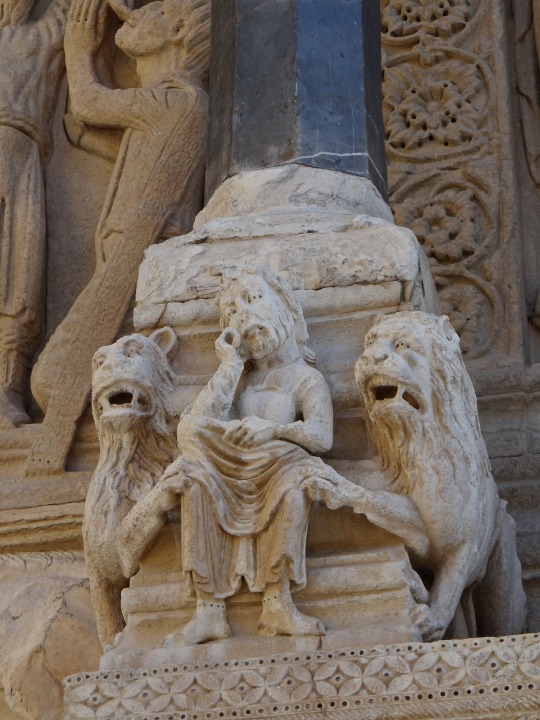
Church of St. Trophime, a lovely Romanesque church building built between the 12th and 15th centuries. The carvings are just stunning.
Explore:
#france#provence#arles#travel#wandering#architecture#original photography#photographers on tumblr#urbanexploration#lensblr#street photography#church architecture#historical architecture#romanesque#wanderingjana
23 notes
·
View notes
Text


Church of St. Trophime in Arles, 2023
#photography#film photography#analog photography#35mm photography#35mm#kodak ultramax 400#architecture
16 notes
·
View notes
Text
Rose – Tanka 2024 #ThursdayDoors – Suzette B's Blog
***FEATURED DOOR, Main Entrance/West Portal, Church of St. Trophime, Arles – France. Image credit: Leonid Andronov | Stock
carved master plan
silent ancients tell stories
standing at portal gates
years and continents apart
a copy builds a rose
**
Situated in the south of France in (if the area of Camargue is included), the largest city in France by kilometers squared and rebuilt several…
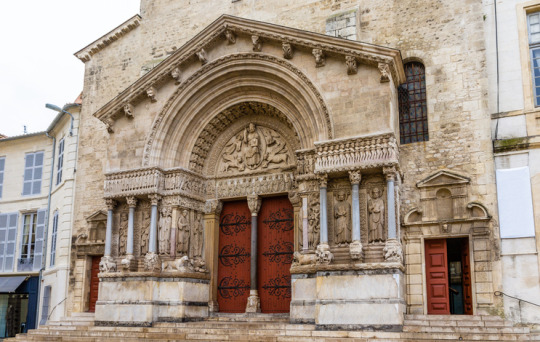
View On WordPress
0 notes
Text

Cantar XLV
Con usura.
Con usura no tiene el hombre casa de buena piedra
con bien cortados bloques y dispuestos
de modo que el diseño lo cobije,
con usura no hay paraíso
pintado para el hombre
en los muros de su iglesia
harpes et lutz (arpas y laúdes)
o lugar donde la virgen reciba el mensaje
y su halo se proyecte por la grieta,
con usura
no se ve el hombre Gonzaga,
ni a su gente ni a sus concubinas
no se pinta un cuadro para que perdure ni para tenerlo en casa
sino para venderlo y pronto,
con usura,
pecado contra la naturaleza,
es tu pan para siempre harapiento,
seco como papel, sin trigo de montaña,
sin la fuerte harina.
Con usura se hincha la línea
con usura nada está en su sitio
no hay límites precisos
y nadie encuentra un lugar para su casa.
El picapedrero es apartado de la piedra
el tejedor es apartado del telar,
con usura
no llega lana al mercado
no vale nada la oveja con usura.
Usura es un parásito
mella la aguja en manos de la doncella
y paraliza el talento del que hila.
Pietro Lombardo no vino por usura
Duccio no vino por usura
ni Pier della Francesca,
no por usura Zuan Bellini
ni se pintó "La Calunnia"
No vino por usura Angélico,
no vino Ambrogio Praedis,
no hubo iglesia de piedra con la firma: Adamo me fecit.
No por usura St. Trophime
no por usura St. Hilaire.
Usura oxida el cincel
Oxida la obra y al artesano
Corroe el hilo en el telar
Nadie hubiese aprendido a poner oro en su diseño,
y el azur tiene una llaga con usura
se queda sin bordar la tela.
No encuentra el esmeralda un Memling.
Usura mata al niño en el útero
no deja que el joven corteje
Ha llevado la sequedad hasta la cama, y yace
entre la joven novia y su marido
contra naturam
Ellos trajeron putas a Eleusis
sientan cadáveres a su banquete
por mandato de usura.
1 note
·
View note
Photo

Il portale romanico della cattedrale di St-Trophime (presso Arles, France) https://www.instagram.com/p/Cq_eQqCoLAv/?igshid=NGJjMDIxMWI=
0 notes
Photo
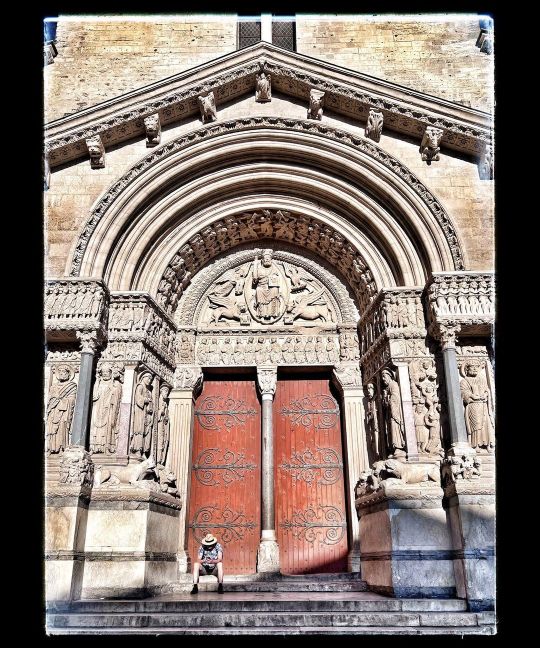
Cathédrale Saint-Trophime d'Arles ❃❃❃❃❃❃❃❃❃❃❃❃❃❃❃❃❃❃❃❃❃❃ #sainttrophime #sainttrophimechurch #eglise #church #catholic #catholique #catholicchurch #arles #instaarles #igersarles #france #hellofrance #hello_france #amazingfrance #paca #travelgram #travelphotography #igersfrance #igersprovence #provence #provencestyle #myprovence #provence_focus_on #provencallife #provencetourisme #provenceaddict #provencemonamour #chusayinka #hellolesud #villeromaine (en Church of St. Trophime, Arles) https://www.instagram.com/p/Cc2TFBQq80S/?igshid=NGJjMDIxMWI=
#sainttrophime#sainttrophimechurch#eglise#church#catholic#catholique#catholicchurch#arles#instaarles#igersarles#france#hellofrance#hello_france#amazingfrance#paca#travelgram#travelphotography#igersfrance#igersprovence#provence#provencestyle#myprovence#provence_focus_on#provencallife#provencetourisme#provenceaddict#provencemonamour#chusayinka#hellolesud#villeromaine
0 notes
Photo

St. Trophime, Arles, France
🌹 my photography🌹
3 notes
·
View notes
Photo


A Reylo Fan art by @lilandersw (Twitter: Lilandersw - Instagram: Lilandersw)
Based on "St. Sebastian Healed By St. Irene" by Trophime Bigot
For Chiaroscuro - The Reylo Museum 4th Edition
131 notes
·
View notes
Photo
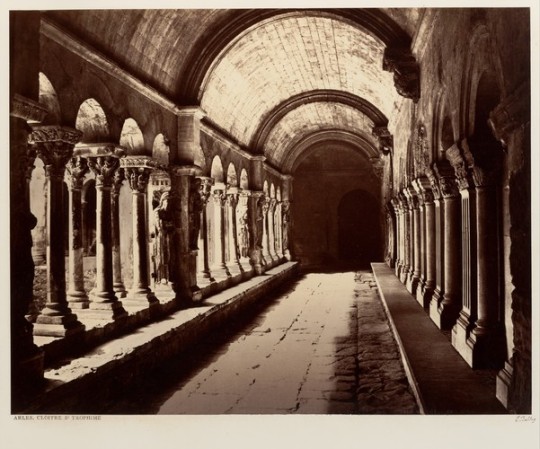
Arles, Cloitre St. Trophime, Edouard Baldus, ca. 1861, Metropolitan Museum of Art: Photography
Gilman Collection, Gift of The Howard Gilman Foundation, 2005
Size: Image: 33.2 x 42.5 cm (13 1/16 x 16 3/4 in.) Mount: 46 x 60.5 cm (18 1/8 x 23 13/16 in.)
Medium: Albumen silver print from glass negative
https://www.metmuseum.org/art/collection/search/283136
16 notes
·
View notes
Text
: Monday 22 October 1838
7 5
11 10
fine but dull morning F61 ½° at 9 – bed (sheets) cold last night – took off the top sheet – put on drawers and red cloak spread my green cloak on the bed and thus slept comfortably – A- and I out at 8 35 to the church and cloister of St. Trophime the cathedral – 2 curious old sculptured white marble tombs opposite each other (on each side the nave) – one the passage of the red sea and overturn of Pharaoh and his host – white washed but neat good church – the cloister of 3 periods the 11th and 13th and......... centuries – at last espied a cobler sitting quietly at his work – the gardien of the cloister contre les enfans who do so much damage to the heads and noses etc. of the sculptures – have done a great deal the cloister cannot be fermé because it is a public passage to and from the church – gave the man ./50 for which he seemed thankful, saying some people gave him something but not many as the place was open – then to the musée d’antiques in the old church of St. Anne (there from 9 ½ to 10 ½) in which the tiresome old unintelligible garrulous concierge was married 57 years ago – but he spoke without feeling – said he neither believed in purgatory nor heaven nor hell l’inferno (hell) – but believed in good – paradise riches and hell poverty in this world such the substance of his talk with which I had no patience – the Pagans said he had Gods – the Jews prophets, the Xtians saints and the republic (republic of France) great men – terrible from the mouth of a tottering toothless old man – the Grecian female nameless head quite beautiful – the Mithras a slim tronc from the collar-bones down to the small of the body just above the hips a serpent coiled round (spirally) and the signs of the Zodiac between the coils – this from cirque as well as a meta round topped 5ft. or more high stone round column in the musée and the granite obelisk in the Place (Place royale) – on the tomb of Tyrannia (the musical instruments) one instrument with a part like a sac, or full bladder, might be intended for a bagpipe – (breakfast from 10 40 to 11 ¾ - then till 12 10 wrote the above of today) - 2 Sileni – fragments – leaning, each of them on an outre (full) over each of which is thrown a lions’ skin – the outre a goats’ or sheeps’ skin, exactly such as those of the Pyrenees shepherds – several amphorae some very recently discovered – at the champs Elysées ¼ league from the ville – all the columns here are from the ruins of the theatre, destroyed by St. Hilaire in his zeal against paganism – many of the monuments here, too, have lost heads, par les enfans, noses, etc. (by the children having throw throwing stone at them) – ½ a large circular base (sculpté) from the theatre placed here in the middle of the apse – and round the apse plaster models of 1st (looking towards the apse and beginning from the left) Venus d’Arles holding right hand an orange or little globe, left hand a little roll? a mirror vide p. 108 2nd gladiator. 3rd. Apollo Belvidere. 4th in the middle and in front of the circular remain from the theatre the ground of Laocoon himself and 2 other figures - 5th Diane à la biche. 6th Cincinnatus stooping and with both hand tying on his sandal (spartille). 7th déesse de Milo – the man said Diane – but no crescent nor any attribute of Diane – more probably a Venus, tho’ nothing very distinctive about her – part of one arm lost, if not of both arms – the Mithra the most ancient and most valuable thing in the collection – home at 11 35/60 – breakfast from 10 40 t0 11 ¾ - then wrote out the 1st 16 lines of today till 12 10 – the master of the house Mr. Pinus went down with us into his Roman catacombs discovered a year ago – full of old bones – some very perfect crania – (skulls) – very extensive vaults – 1 part of the excavation he called Thermes – extend under the adjoining street – the perfet gives him a sum of money to fouiller (open out and examine the place) the prefet to take ½ and the proprietor ½ of what is found – corrected the bills from dinners at 5/. a head to 4/. a head but could only get 1/. taken off for our 2 bedrooms (one double bedded the other single bedded) and the servants rooms so paid 10/.! for ‘apartment’ – I must marchander again – the champs Elysées where amphorae etc. etc. found recently are where the Romans used to bury – and are ¼ lieue from the town, near the cemetery and new road
SH:7/ML/E/22/0044
over la Crau to Marseilles 12 ½ postes in 8 hours – off from Arles at one (hotel du nord chez Pinus. good eating and good beds, but I ought to have marchandé the apartment) - good road to St. Remy – the white rock mountains of la Crau? right and sweeping round to in front of us – flat country and wood left, and , in the distance (left) joining on to the commencement of our in-front (left) see the 4 pointed singular (volcanic?) mountains that we had at some distance right when nearish to La Foux on Friday and at the foot of which I suppose is Beaucaire, and now (at 1 25) pass at some distance (right) the large pile of building, monastery and ruin of old chateau, of Mont Majour vol. 1 Frossards’ tableau de Nismes etc. (vid. p. 74 bis.) at 1 ¾ 4 ploughs all together in 1 champ, 1 stilt, 1 mule, 1 man each – some of the ploughs with shafts – some with stretches and rope-traces – a few vines, right and left – the steppy-ridged, hoary, green-tufted mountains range (right) sweeps round nearish to us – lopped willows, and poplars as yesterday pruned up (perfectly branchless) to a little short tuft at the top – singular appearance of them – at 1 55 canal close alongside us (right) at 2 pass over stone bridge over canal de Craponne? and right (little distance) very pretty picturesque handsome looking little church of St. Croix (vide Frossard 1. p. 75 bis.) and just beyond the church square tower of old castle and appearance of old stone-quarry and olive grounds and mulberries – at 2 10 the rocky, partly hoary mountain range (left) nears us, sweeping round to in-front – more vines and olives and mulberries, and round-toppy rocky hills close right �� these hills remind me of the Euganean hills about Arqua (Petrarchs’ Petrarchs’ villa at vide Journal of 1827) – the tallish, dark, pointed cypress is a striking feature every now and then about the houses and gardens here – the whole plain, some miles wide, lying between the 2 rocky hoary ranges of mountain right and left, is wooded with olive, and mulberry, and vine – now at 12 40 the plain (or fine valley) perhaps 8 or 10 miles wide – really fine – the rocks (right) perhaps 3 miles off? (out of the 8 or 10 width of the plain) very rugged and picturesque – at St. Remy at 3 5 the bare, hoary pointy line of rock (right) make a fine approach of St. Remy – pretty picturesque little town with good handsome church – new Ionic 4 column portico – and old gothic crocketted spire behind – the main street of St. R- wide with row of large elms on each side like a Paris boulevard – turn (right) from out of the town, along a not good road by-road to a small village near the antiques for our heavy carriage drove slowly – foot’s pace – thro’ vineyards and olive grounds and at 3 17 at the antiquities – the fine hoary rugged broken now near to us – 33 minutes gazing in admiration at these fine, wonderfully well preserved remains – and read the account of them in my Itinerary midi. p. 426. 10 columns at the top of the mausoleum, and the coupole [cupola] roof of stone cut shingle-wise - the heads of the 2 figures at the top restored – the gentleman in a bag wig? a fat round head with his hair in one large broad curl on each side over the ear! – did not distinctly see the ladys’ head – on the triumphal arch - 8 figures of which only 2 of the heads on – one mans’ north west – and one womans’ north east – on the base of the mausoleum garlands hung over the sculptures – 2 festoons over each face of the base, each festoon supported by a boy or [?] (a.b.) and over each festoon, or resting on it (at c.d.) a head of Silenus (or a mark) horned – the wreaths seemed to me to be wreaths or garlands of lotus – beautiful wine and olive country – the jagged ridge (or crête) of high, hoary rock forming a long line close to the monuments’ along the east of them – off from the monuments at 3 52 and back at St. Remy (à la poste) at 4 2 – 2 ¾ p. from Arles to St. Remy + 1/2p. for going to the monuments and back off from St. Remy at 4 16 – charming country hereabouts – woman stripping the mulberry trees of their leaves still green, and putting them into sheets to carry home – what for? the rugged hoary rocks near (right) like a jagged wall magnificent circular extensive plain before us – a plough with 2 mules 1 man and 1 stilt at 4 25 and here women with sheets full of mulberry leaves – Platanus avenues here and there up to the houses (campagnes) – at 4 55 pretty cypress-hedge for 3 or 4 minutes (right) along the road try it at Shibden and fine rich red-marlby soil – at 5 ¼ pass largeish goodish looking auberge chez Dumas and 2 or 3 more houses – the hills here where not under cultivation (vine chiefly or olive or mulberry) covered with rosemary etc. etc. as at the Pont du Gard (vid. Friday) – have passed several carts laden with quercus kermes or quercus ilex and box for fire-wood – the rocky range closeish (right) and rocks too now at 5 ¼ close left – a sort of vine olive and mulberry tree bassin – Mediterranean scenery – at St. Andiol at 5 28 as I thought till on having the master up about Vaucluse after dinner (dinner at 7 5 to 8 ½) found ourselves at Orgon – the road not bien entretenu between St. Remy and St. Andiol – they always go by Orgon to St. A- no Inn there but care de Roulage 5 or 6 beds in a room and where they do not like to have travellers en poste – 4 lieues de pays = 6 lieues de poste from here to Vaucluse – had a man up who would let me his cabriolet and 1 horse and driver to V- and back (3 ½ hours going the same returning and 2 hours refreshment for the horse) for 30/. – too much – 7p. from Avignon to V- and back – 8 horses and comfort for 56/. – decline the cabriolet – be off early in the morning – breakfast at A- and going from there to V- tomorrow or Wednesday – before dinner from 5 50 to 7 5 and afterwards from 8 ½ to now 9 50 wrote out today – fine day – F62 ½° now at 10 10 pm – A-‘s monsieur came this morning just before breakfast –
6 notes
·
View notes
Photo
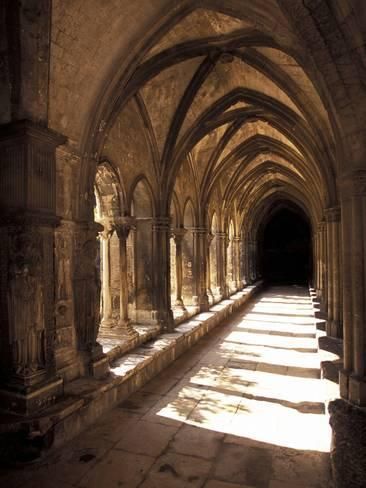
Cloister Detail, Arles, Cloitre St-Trophime, Bouches-Du-Rhone, Provence, France.
6 notes
·
View notes
Text
Canto XLV
With Usura
With usura hath no man a house of good stone
each block cut smooth and well fitting
that design might cover their face,
with usura
hath no man a painted paradise on his church wall
harpes et luz
or where virgin receiveth message
and halo projects from incision,
with usura
seeth no man Gonzaga his heirs and his concubines
no picture is made to endure nor to live with
but it is made to sell and sell quickly
with usura, sin against nature,
is thy bread ever more of stale rags
is thy bread dry as paper,
with no mountain wheat, no strong flour
with usura the line grows thick
with usura is no clear demarcation
and no man can find site for his dwelling.
Stonecutter is kept from his tone
weaver is kept from his loom
WITH USURA
wool comes not to market
sheep bringeth no gain with usura
Usura is a murrain, usura
blunteth the needle in the maid’s hand
and stoppeth the spinner’s cunning. Pietro Lombardo
came not by usura
Duccio came not by usura
nor Pier della Francesca; Zuan Bellin’ not by usura
nor was ‘La Calunnia’ painted.
Came not by usura Angelico; came not Ambrogio Praedis,
Came no church of cut stone signed: Adamo me fecit.
Not by usura St. Trophime
Not by usura Saint Hilaire,
Usura rusteth the chisel
It rusteth the craft and the craftsman
It gnaweth the thread in the loom
None learneth to weave gold in her pattern;
Azure hath a canker by usura; cramoisi is unbroidered
Emerald findeth no Memling
Usura slayeth the child in the womb
It stayeth the young man’s courting
It hath brought palsey to bed, lyeth
between the young bride and her bridegroom
CONTRA NATURAM
They have brought whores for Eleusis
Corpses are set to banquet
at behest of usura.
Ezra Pound
5 notes
·
View notes
Text


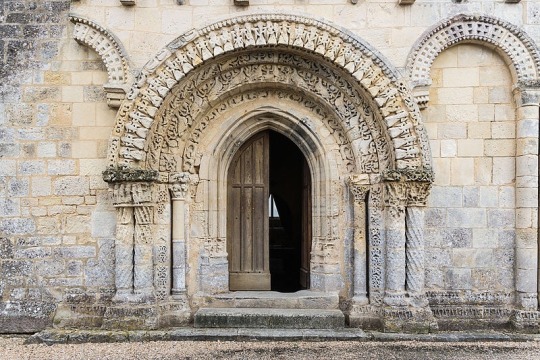

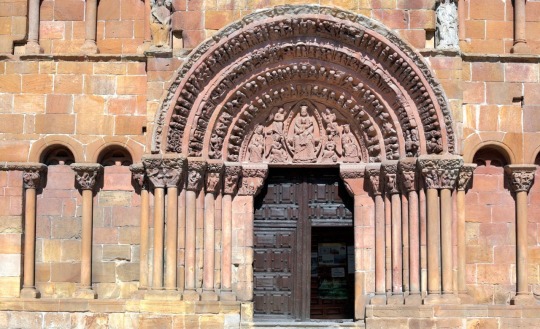
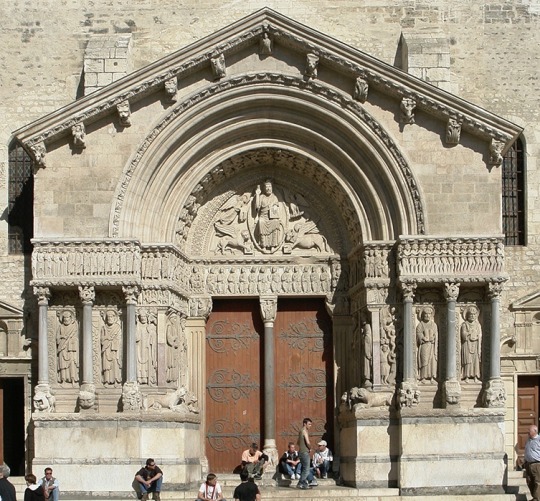


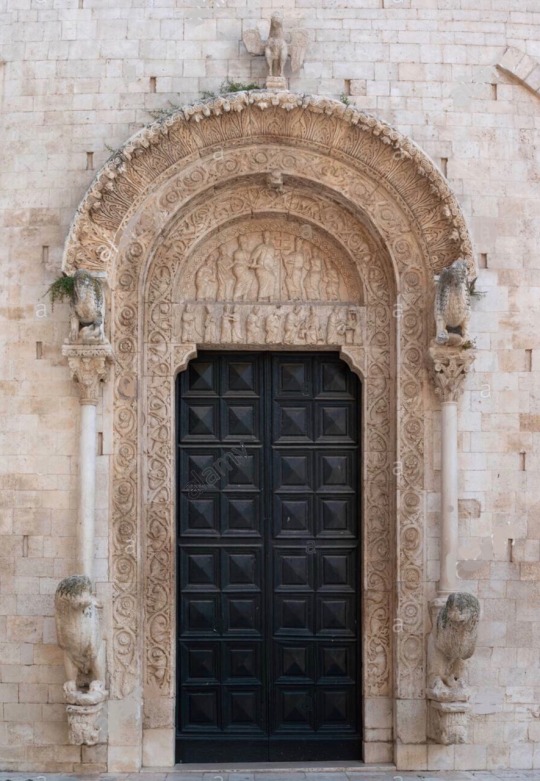
THE ROMANESQUE PORTAL 1080-1120
Aulnay de Saintonge, St Pierre; Kilpeck, Priory Church; Avy, Nôtre-Dame; St Julien de Jonzy, Église Saint Julien; Estrella, San Miguel; Arles, Saint Trophime; Marignac, Saint Sulpice; Iffley, St Mary the Virgin; Bitonto, Cattedrale di Santa Maria Assuntà.
17 notes
·
View notes
Link
What is new..
13B.03 - Seal of Salomon
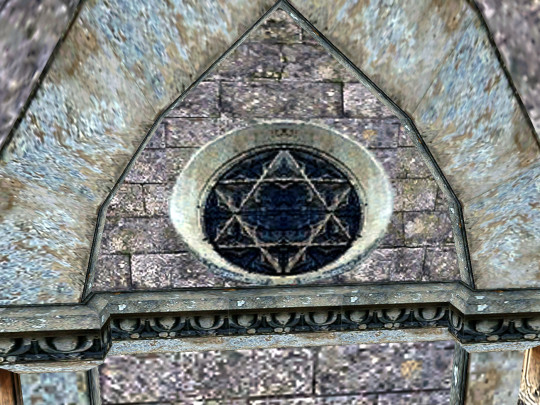

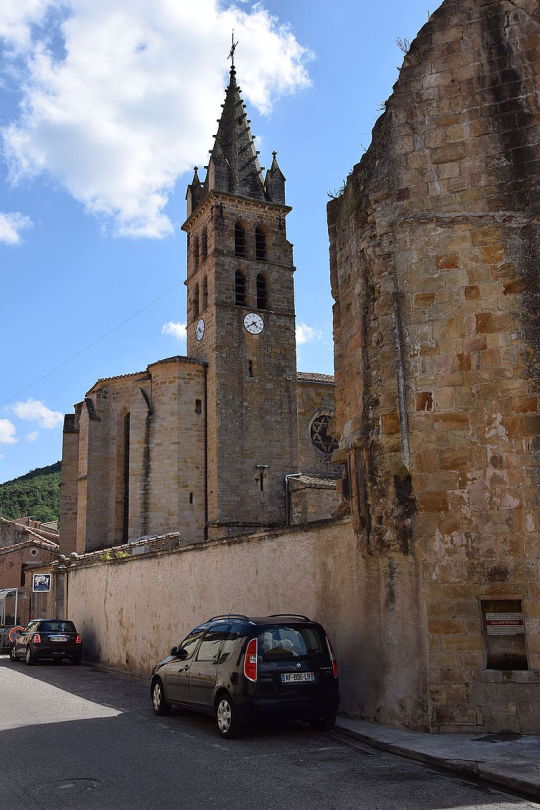
The star of David can be seen in the room. I believe it came from the ruined cathedral in Alet-les-Bains . It is - again - a reference to the south of France and the Catharic influence on the game. Ring a bell? See here for more information.
One of the more interesting features of the ruined cathedral in Alet-les-Bains is the fact that it has stained glass windows made in the form of the “Star of David” or Hexagram. (website)
More information about the star of David.
Because of its geometric symmetry, the hexagram has been a popular symbol in many cultures from earliest times. Anthropologists claim that the triangle pointing downward represents female sexuality, and the triangle pointing upward, male sexuality; thus, their combination symbolizes unity and harmony. In alchemy, the two triangles symbolize *"fire" and *"water"; together, they represent the reconciliation of opposites. Some medieval alchemists even borrowed the talmudic punish mayim, fiery water, and shamayim , heaven - to demonstrate the interpenetration of the two realms. 1 Because if this symbolism, the hexagram was even used occasionally as the emblem displayed above a brandy shop. (From here)
13B.04 - Decoration
The decoration seen in the room came from the main gate of the church of St. Trophime in Arles.

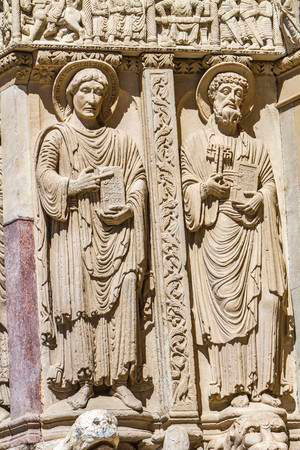
Some trivia:
There is an animation in the game, it destroys the beast statue. It is called IG_6_66. Which is kind of funny because the number of the beast is 666.

18 notes
·
View notes
Text
ARELATE AND GLANUM

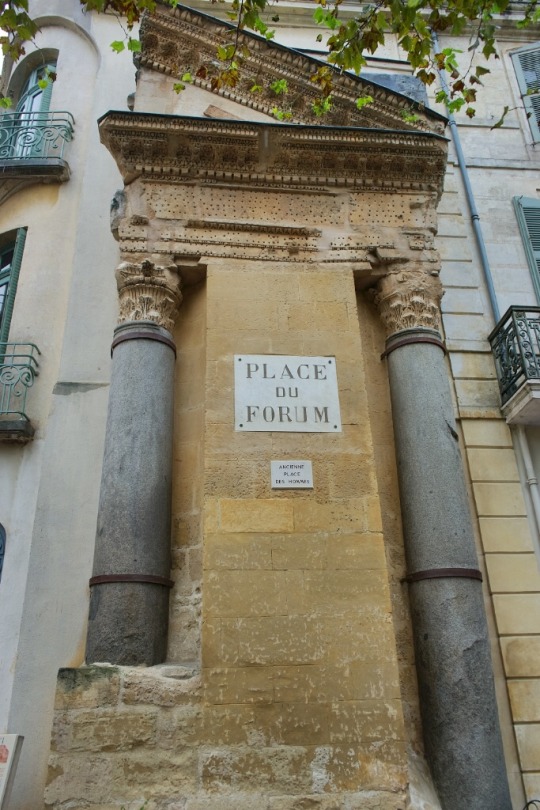



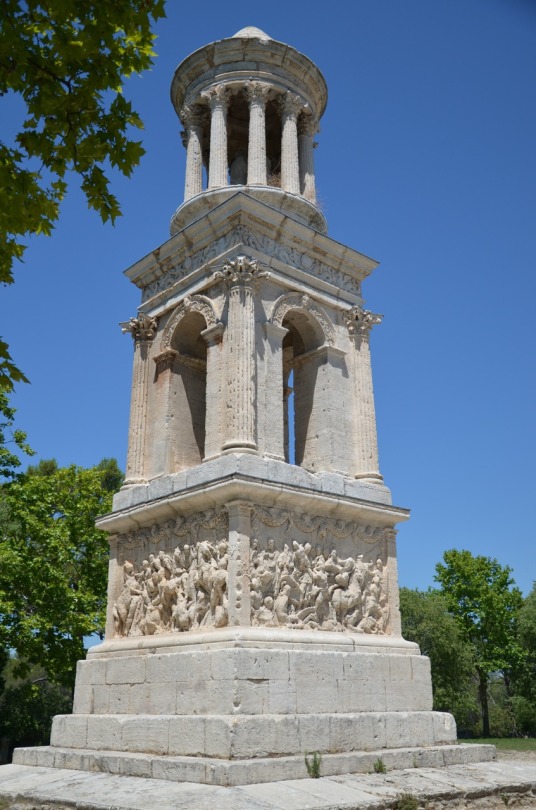
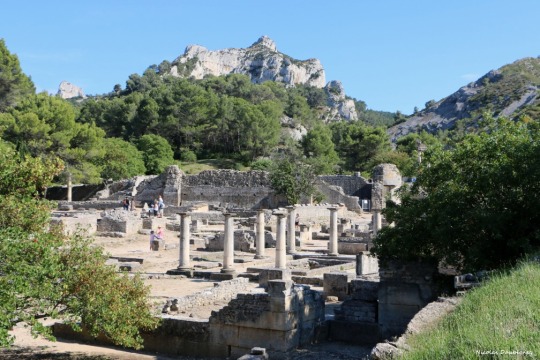


I.
The city of Arelate was annexed by the Romans in 123 BC. Its citizens took the side of Julius Caesar in his struggle with Pompey the Great and were handsomely rewarded after his victory. A colony, settled with veterans of the sixth Legion, was formally established at that time.
The monumental architecture of Arelate, including an amphitheatre, theatre, a triumphal arch, baths, and bridges, reflected its status as the principal city of Gallia Narbonensis. In the 4th century Constantine favored the city (his son, Constantine II, was born there). The western emperors frequently In the 3rd and 4th centuried. the emperors often resided in Arelate to be geographically closer to the ever-contested frontier.
The city had a strong Christian community, led by such distinghished bishops as St Trophime, St Hilary, and Caesarius of Arles. The latter's contentious interactions with the various barbarian kingdoms on behalf of the local population helped to establish the church as the most effective and preemiment Roman institution to suvive to collapse of the political order in the foresaken west.
The mill at Barbegal, 3 km outside of modern Arles, is one of the most impressive feats of Roman engineering to survive. Powered by two aqueducts feeding 16 tiered overshot water wheels, the mill ground 4.5 tons of flour per day.
II.
The town of Saint-Rémy-de-Provence is 17 km from Arles. On its outskirts lie the extensive remains of the wealthy Roman city of Glanum. The two mausoleum and triumphal arch, known locally as "les antiques," testify to the taste and prosperity of the Roman transplants living in southern Gaul. The Mausoleum of the Julii (c. 40 BC), was erected by a wealthy family who had been granted the privilege to use the family name Julius in recognition of three generations of military service to the state, is the best preserved Roman funerary monument. The reliefs of the truncated triumphal arch next to it it depict the participation of Glanum in the subduing of barbarians. Ruins of several large atrium houses survive inside the city. Glanum was abandoned c. AD 260 after it was sacked by the Alemmanni.
#classical antiquity#roman architecture#julius caesar#provence#gallia narbonensis#glanum#arles#arelate#st rémy de provence
208 notes
·
View notes